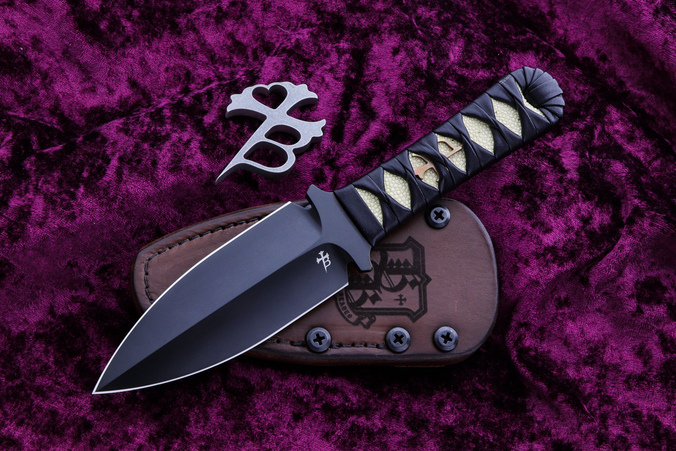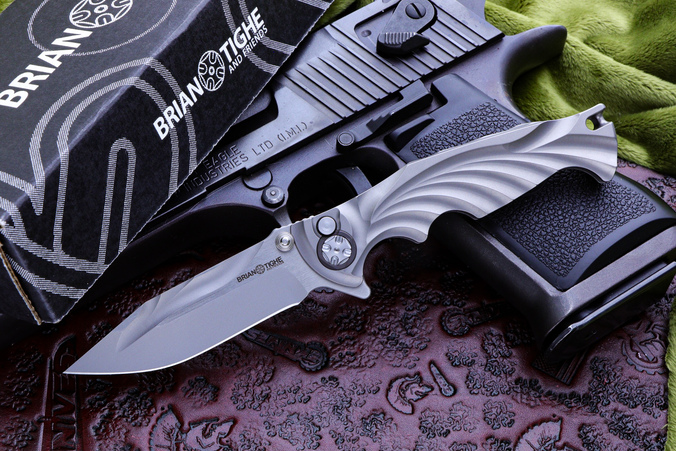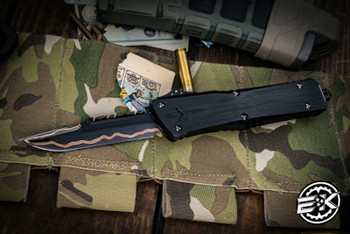8 Tips for Safely Storing and Displaying Your Custom Knives
Oct 16th 2018

Custom knives require a special kind of care and attention to preserve their performance and appearance.Custom knives are typically made from rare, fragile or expensive materials and need proper maintenance and careful storage. Here are our eight tips for safely storing and displaying your custom knives.
1. Choose Your Display Case
Most custom knives are made to be part of a collection that is only used very occasionally or not at all, which means their primary function is to look spectacular. To show off your custom knife collection at its very best, you need the right display case that will keep your knives safe.
If you have a custom fixed blade knife or plan to display your knives with the blades open, make sure that the place where they rest won’t damage or corrode the blade. Padded and acid-free environments are best; however, there are a few other methods for displaying your knives, including magnets or gun storage cupboards that are also effective for protecting your collection.
2. Organize Your Collection
Before you can properly store your custom blades, it is essential to organize and catalog your collection, not only for a more appealing display but also for easier cleaning and maintenance and insurance purposes.
There are many ways of organizing your blades, including by maker, year, size, blade style, among others.
3. Clean Your Knives Regularly
Cleaning your knives is especially crucial if you use your custom knife regularly. However, it also prevents dust and debris from building up on custom knives on display, which can corrode fragile blades over time.
Cleaning your knives is best done by attending to the entire collection. This means that you won’t overlook any individual knives and allows you to create a cleaning schedule.
To clean your knives, use a mild detergent and hand wash the blade with a non-abrasive sponge, and then rinse it under clean water and dry thoroughly to prevent rust. To clean the knife handle, you may need to use a Q-tip to get into the crevices of grips and grooves.

4. Sharpen the Blades
Most modern custom blades are constructed from steel and are designed to hold their edge for the long term. However, if your collection includes vintage collector's pieces as well, or you use your custom knife frequently, you will need to sharpen your blades periodically.
Every custom knife enthusiast should learn how to sharpen a blade properly. To ensure that you don’t damage your knife in the process, always use a high-quality sharpener that has a rough stock removal surface, as well as a finishing surface, and sharpen the blade on a 20-degree angle.
5. Avoid Oils
Oiling the blades of your knives is an age-old practice and can protect the blade from moisture and rust. However, oil can soak into the padding of sheaths and display cases and, in some cases, may damage other decorative components on your knife.
More custom knife collectors are using wax rather than oil, as it won’t leave any greasy residue while still being moisture repellant. When using wax, buff a small amount of it into the blade with an auto cloth or chamois instead of fleece or cotton, which can leave behind fibers.
Wooden handles can also benefit from occasional polishing with wax or furniture polish to avoid brittleness.
6. Lockable Storage
Easily accessible knife storage is a recipe for disaster, especially if there are children in the house. A beautiful custom knife collection is just begging to be handled, but improper handling can lead to wear and damage. Keeping a lock on your display cases prevents your knives from falling into the wrong hands.
7. Keep Out of Direct Sunlight
You may be tempted to display your collection in the space with the most natural light; however, sunlight can damage some elements in custom knives. UV light oxidizes wood and bleaches gemstones. The heat from the sun can also weaken adhesives and bonding agents.
Keep your custom knives in a display case out of direct sunlight and use other forms of lighting to enhance your display.
8. Minimize Moisture
When it comes to custom knife blades, moisture means rust. When displaying your custom knives, it is essential to minimize the exposure to moisture. Unfortunately, most moisture exposure occurs due to high humidity, which can be problematic unless you have climate-controlled storage.
A more budget-friendly option to minimize the moisture in your display case and protect your knives from corrosion is to place desiccant in the bottom of the display case.

Conclusion
Prolong the life of your custom knives with proper cleaning and storage practices. To learn more about what custom knives for sale are available to add to your collection, and how to care for them, call us at (423)-525-9477 to talk with our experienced staff.

